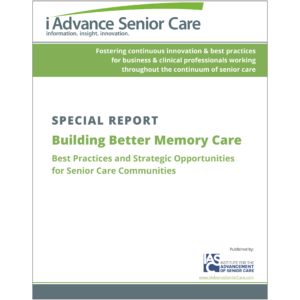Neuroplasticity and its impact on senior living
Our brains were thought of in the past to be trainable up to a certain age and then fairly set. Quotes like "you can't teach an old dog new tricks" exemplify this thought. Trying to learn a new language at forty cements the idea.
However, lately no matter where I am at or what article I am reading the word neuroplasticity: neuro (meaning nerves and/or brain) and plastic (meaning changeable or pliable) is popping up. The impact of this term on everyone is tremendous but especially for seniors, stroke victims or anyone with a desire to get smarter, faster and better.
The brain was once explained to me as waterways that are like rivers. The more we do something over and over again the deeper the carving out of the land that the water is flowing through. If we do it often enough we could do it in our sleep. This type of deep-rooted neural connection would be like the Grand Canyon. If we rarely do something the pathway or connection is more like a creek that is only active during a heavy rain. It can easily be overgrown and difficult to find again if water does not periodically flow in that same exact area.
While understanding this is great, we now know that we can retrain the brain and create new connections or reroute around broken ones. Say you lose a portion of your brain due to a stroke. Think of this being a river and it just dried up. However, the water source is still there and if you can create a new path and then train the water to go down this new path you can regain the brain function that you have lost. Pretty awesome! I wish my computer worked like that when it broke.
The concept is simple but elegant and entrepreneurs realized the impact of this and were off to the races before many of us had even heard of the word. Examples of this in action are: Lumosity.com, mind360.com, brainmetrix.com and seniorbrains.com, to name just a few.
Physical therapists and doctors now are doing brain training with patients to improve vision and balance and reduce stress. Just as there are games to help keep the brain fit there are also products and methods. Two examples come to mind:
- The Feldenkrais Method (recently featured in Arthritis-Self Management magazine)
Excerpt below from Andrew Weil, MD's website:
"The Feldenkrais Method claims to be successful in training the nervous system to find new pathways around areas of damage. Patients with orthopedic problems in bones and joints can use the Feldenkrais Method to assist in correcting poor posture or habits of movement that may cause pain. The exercises can re-educate the brain and nervous system to develop new ways of moving and perceiving the body, as well as elevating mood and increasing overall feelings of well-being."
- The Vision Gym and The Balance Gym developed by Dr. Eric Cobb at Z-Health, which retrains your eyes and inner ear so that seniors can increase their ability to be mobile and independent.
Those who understand that neuroplasticity is as much of a game changer as Google was to our ability to access information and develop connections around the world will be the leaders in the future of senior living. While we have done a great job with physical therapy it's time to get brain gyms integrated into the plan and part of the senior living daily routine.
Learning, memory improvement, problem solving, vision, balance and depression can all be improved if we understand neuroplasticity and how to have fun while "teaching an old dog new tricks.” For many with undesirable family histories relating to cognitive issues, vision loss and depression this is offers a new lease on life.
I Advance Senior Care is the industry-leading source for practical, in-depth, business-building, and resident care information for owners, executives, administrators, and directors of nursing at assisted living communities, skilled nursing facilities, post-acute facilities, and continuing care retirement communities. The I Advance Senior Care editorial team and industry experts provide market analysis, strategic direction, policy commentary, clinical best-practices, business management, and technology breakthroughs.
I Advance Senior Care is part of the Institute for the Advancement of Senior Care and published by Plain-English Health Care.
Related Articles
Topics: Activities











